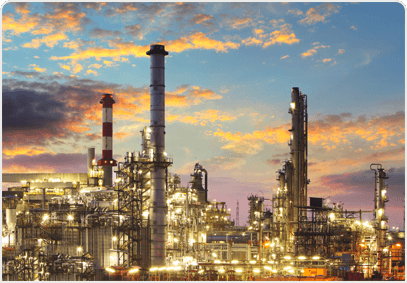5 Simple Techniques For Roar Solutions
5 Simple Techniques For Roar Solutions
Blog Article
Unknown Facts About Roar Solutions
Table of ContentsEverything about Roar SolutionsThe 7-Minute Rule for Roar SolutionsThe 3-Minute Rule for Roar Solutions
In such an ambience a fire or explosion is feasible when 3 basic conditions are fulfilled. This is usually described as the "dangerous location" or "burning" triangle. In order to safeguard setups from a prospective explosion a technique of analysing and classifying a potentially hazardous location is called for. The function of this is to guarantee the correct selection and installation of tools to eventually stop a surge and to make certain security of life.
(https://www.anobii.com/en/01749dcc41232b575a/profile/activity)
No devices should be set up where the surface temperature level of the equipment is above the ignition temperature level of the provided risk. Below are some usual dust dangerous and their minimum ignition temperature level. Coal Dust 380C 225C Polythene 420C (melts) Methyl Cellulose 420C 320C Starch 460C 435C Flour 490C 340C Sugar 490C 460C Grain Dirt 510C 300C Phenolic Resin 530C > 450C Aluminium 590C > 450C PVC 700C > 450C Soot 810C 570C The likelihood of the hazard being present in a concentration high adequate to trigger an ignition will differ from area to location.
In order to identify this risk an installation is split into areas of risk relying on the quantity of time the dangerous exists. These locations are referred to as Zones. For gases and vapours and dirts and fibres there are three areas. Area 0 Area 20 A dangerous ambience is extremely most likely to be existing and might be existing for lengthy periods of time (> 1000 hours per year) or also constantly Area 1 Zone 21 A dangerous ambience is feasible however unlikely to be existing for long durations of time (> 10 450 C [842 F] A category of T6 means the minimal ignition temperature is > 85 C [185 F] Dangerous location electric devices maybe designed for use in higher ambient temperature levels. This would certainly suggested on the ranking plate e.g. EExe II C T3 Ta + 60C( This suggests at 60C ambient T3 will certainly not be exceeded) T1 T1, T2, T3, T4, T5, T6 T2 T2, T3, T4, T5, T6 T3 T3, T4, T5, T6 T4 T4, T5, T6 T5 T5, T6 T6 T6 A T Class ranking of T1 indicates the maximum surface temperature level created by the tool at 40 C is 450 C. Thinking the connected T Course and Temperature level rating for the tools are suitable for the area, you can constantly use a tool with an extra stringent Department score than required for the location. There isn't a clear response to this inquiry. It really does depend upon the type of devices and what repairs need to be accomplished. Devices with certain test procedures that can not be carried out in the he has a good point area in order to achieve/maintain third event ranking. Need to come back to the manufacturing facility if it is before the devices's service. Field Repair By Authorised Personnel: Difficult screening might not be called for nonetheless details treatments might require to be adhered to in order for the equipment to preserve its third event rating. Authorised employees need to be employed to perform the work correctly Repair need to be a like for like substitute. New element should be taken into consideration as a straight substitute requiring no unique screening of the devices after the repair work is full. Each piece of tools with a dangerous ranking must be reviewed independently. These are described at a high degree listed below, however for more comprehensive info, please refer straight to the standards.
See This Report on Roar Solutions
The devices register is a detailed database of devices documents that includes a minimum collection of fields to determine each item's location, technical specifications, Ex lover category, age, and ecological data. The proportion of Thorough to Shut examinations will be identified by the Devices Risk, which is evaluated based on ignition threat (the likelihood of a source of ignition versus the possibility of a flammable ambience )and the dangerous area classification
( Zone 0, 1, or 2). Executing a durable Risk-Based Evaluation( RBI )strategy is important for making sure compliance and security in handling Electrical Tools in Hazardous Locations( EEHA).
Unknown Facts About Roar Solutions

In regards to explosive risk, a harmful location is a setting in which an explosive atmosphere exists (or might be expected to be existing) in amounts that need unique preventative measures for the building and construction, setup and use devices. hazardous area course. In this post we check out the obstacles dealt with in the office, the threat control procedures, and the called for proficiencies to work safely
These materials can, in specific problems, develop explosive atmospheres and these can have major and unfortunate repercussions. Many of us are acquainted with the fire triangle get rid of any one of the three aspects and the fire can not take place, but what does this mean in the context of harmful areas?
In most circumstances, we can do little about the levels of oxygen airborne, yet we can have substantial influence on resources of ignition, for instance electric equipment. Hazardous locations are recorded on the dangerous area classification drawing and are identified on-site by the triangular "EX-SPOUSE" indicator. Here, among various other crucial information, zones are divided into three types depending upon the threat, the possibility and period that an eruptive atmosphere will certainly exist; Zone 0 or 20 is considered one of the most unsafe and Zone 2 or 22 is deemed the least.
Report this page